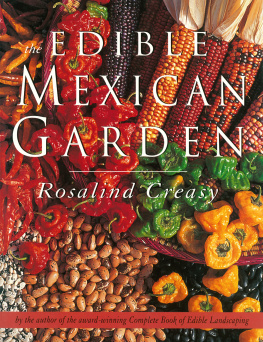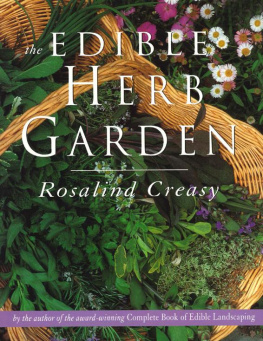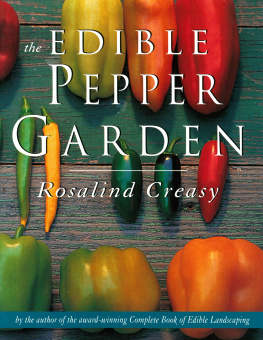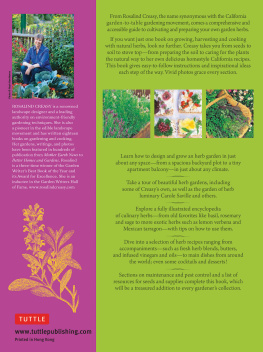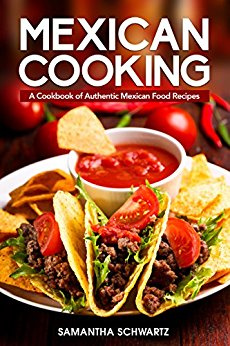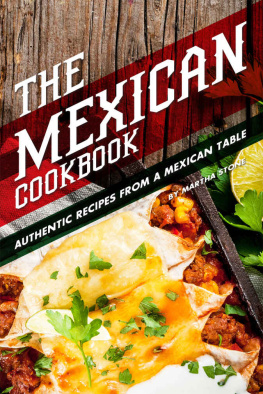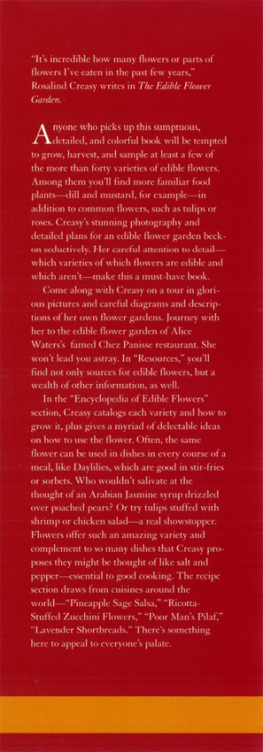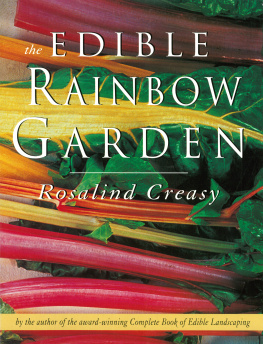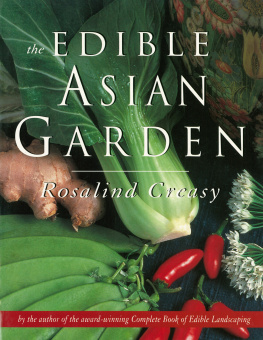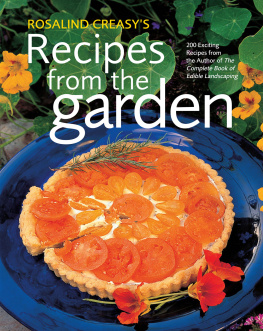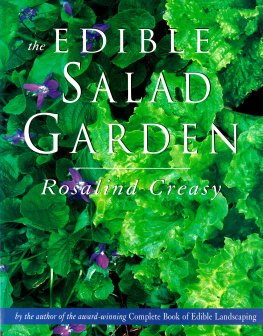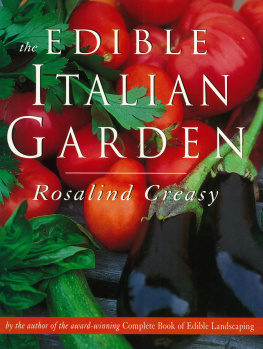acknowledgments
M y garden is the foundation for my books, photography, and recipes. For nearly twelve months of the year, we toil to keep it beautiful, bountiful, and organic! Unlike most gardens, as it is a photo studio and trial plot, my garden must look glorious, be healthy, and produce for the kitchen in every season. Needless to say, this is a large undertaking. For two decades, a quartet of talented organic gardener/cooks have not only given the garden hundreds of hours of loving attention but also they have been generous with their vast knowledge of plants. Together we have forged our concept of gardening and cooking, much of which I share with you in this series of garden cookbooks.
I wish to thank Wendy Krupnick for giving the garden such a strong foundation and Joe Queirolo for maintaining it for many years. For the last decade, Jody Main and Duncan Minalga have helped me to greatly expand my garden horizons. No matter how complex the project, they enthusiastically rise to the occasion. In the kitchen, I am most fortunate to have Gudi Riter, a gifted cook and food lover. I thank her for the help she provides as we create recipes and present them in all their glory.
I thank Dayna Lane for her steady hand and editorial assistance. In addition to day-to-day compilations, she joins me on our constant search for the most effective organic pest controls, superior varieties, and the best sources for plants.
A book such as this needs much technical support. Diana Kennedys help was invaluable a decade ago when I was starting on my Mexican garden adventure; Lucinda Hutson opened her Texas garden and shared her herb and chile information, complete with a tour of the Tijuana Mercado; Olivia and Cruz Montanez, owners of the Imperial Spice Company, and Juvenal Chavez, owner of Mi Pueblo markets in San Jos, gave hours of detailed plant and cooking details; Jeff Dawson, then Garden Director at Kendall Jackson Vineyards, opened his vast chile and Mexican plantings to me; Ed Walsh and Tess McDonough, chefs at the Kendall Jackson Winery, and Virginia Torres gave me recipes. Luis Torres, cooking maven, expanded my basic knowledge of Mexican recipes and cooking ingredients and provided a number of recipes.
Gardeners and cooking professionals are by nature most generous. I want to thank Carole Saville, who helped across the board with recipe ideas and photo safaris, and who contributed much of the information on Mexican herbs; Craig Dremann of the Redwood City Seed Company, for hours of plant identification and sleuthing; and Nancy Zaslavsky, for generously sharing her vast knowledge of Mexican cooking and many recipe ideas.
I would also like to thank a large supporting cast: especially my daughter Laura and my extended Mexican-American family, including her husband, Joel Chavarin, ever ready for a trip to the Mexican market and to clarify basic cooking concepts; Rachel, Chris, Veronica, and Alex Chavarin, who help and encourage; my daughter-in-law, Julie Creasy, who is always ready to try Mexican recipes with my son, Bob; and my husband, Robert, who gives such high-quality technical advice and loving support.
Many people were instrumental in bringing this book project to fruition. They include Jane Whitfield, Linda Gunnarson, and David Humphrey, who were integral to the initial vision; Kathryn Sky-Peck, who provided the style and quality of the layout; and Marcy Hawthorne, who made the lovely drawings. Heartfelt thanks to Eric Oey and to the entire Periplus staff, especially Deane Norton and Jan Johnson, for their help. Finally, I would like to thank my editor, Jeanine Caunt, for her strong presence, many talents, and dedication to quality.

appendix A planting and maintenance

C overed in this section are the basics of planning a vegetable garden, preparing the soil, starting seeds, transplanting, fertilizing, mulching, composting, installing irrigation and watering, weeding, crop rotation, and using floating row covers.
Planning Your Vegetable Garden
You can interplant Mexican vegetables and herbs among your ornamental flowersmany, such as amaranth and peppers, are quite beautifulraise them in large containers or planter boxes, or add them to your existing vegetable garden. If you have no vegetable garden, you can design one. The first step in planning any vegetable garden is choosing a suitable site. Most chefs recommend locating the edible garden as close to the kitchen as possible, and I heartily agree. Beyond that, the majority of vegetables need at least six hours of sun (eight is better)except in warm, humid areas, where afternoon or some filtered shade is best. Most annual vegetables also need fairly rich, well-drained soil with lots of added organic matter.
Take note of what type of soil you have and how well it drains. Annual vegetables need to grow fast and with little stress to be tender and mild. Their roots need air and, if the soil stays waterlogged for long, roots suffocate or are prone to root rot. If you are unsure how well a particular area in your garden drains, dig a hole about 10 inches deep and 10 inches across and fill it with water. The next day, fill it again; if it still has water in it eight to ten hours later, you need to find another place in the garden that will drain much faster. Amend your soil with much organic matter and mound it up at least 6 to 8 inches above the ground level, or grow your vegetables in containers. A very sandy soil that drains too fast also calls for the addition of copious amounts of organic matter.
Find out, too, what your soil pH is. Nurseries have kits to test your soils pH and University Extension Services can lead you to sources of soil tests and soil experts. Most vegetables grow best in soil with a pH between 6.0 to 7.0in other words, slightly acidic. As a rule, rainy climates have acidic soil that needs the pH raised, usually by adding lime, and arid climates have fairly neutral or alkaline soil that needs extra organic matter to lower the pH.
Once youve decided on where you are going to plant, its time to choose your vegetables. Your major consideration is, of course, what flavors you enjoy using in the kitchen. With this in mind, look for species and varieties that grow well in your climate. As a rule, gardeners in northern climates and high elevations look for vegetables that tolerate cool or short summer conditions. Gardeners in hot, humid areas require plants that tolerate diseases well and need to consider carefully choosing heat-tolerant vegetables.
The USDA Plant Hardiness Zone Map groups eleven zones according to winter lows, a help in choosing perennial plants but of limited use for annual vegetables. Of additional interest to the vegetable gardener is the AHS Plant Heat-Zone Map, published by the American Horticultural Society. The heat map details twelve zones that indicate the average number of days each year when a given area experiences temperatures of 86F or higherthe temperature at which many plants, including peas and most salad greens, begin to suffer physiological damage. In the Encyclopedia of Mexican Vegetables (page ), I indicate which varieties have a low tolerance to high temperatures and those that grow well in hot weather. See the Bibliography for information on obtaining the heat map.
Crop placement must also be considered. Take care not to plant tall crops, such as corn, where they will shade sun-loving plants, such as peppers. Setting out a plan for crop rotation is wise at this point, too, and certainly must be considered in already established gardens. (See the Crop Rotation entry on page ).

